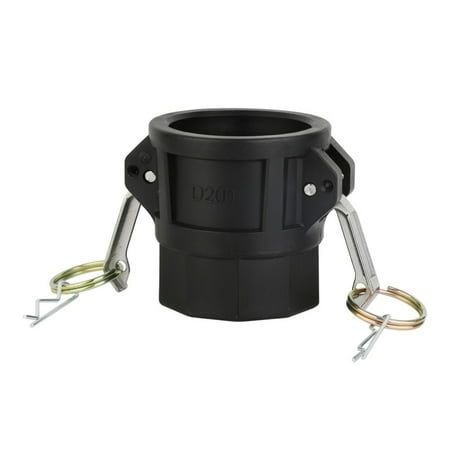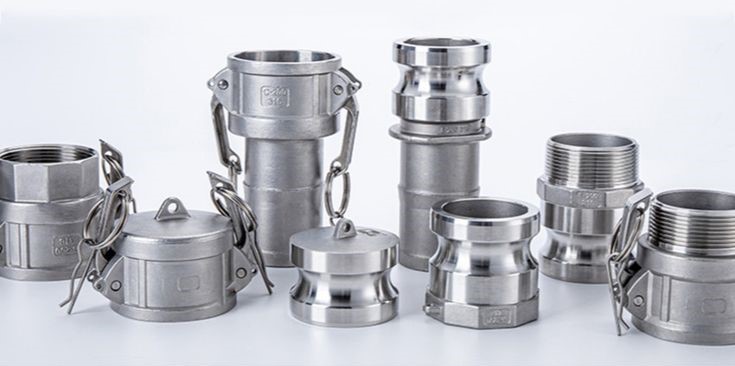Introduction
Camlock fittings, also known as cam and groove couplings, have revolutionized the way industries manage fluid and material transfer. Whether you’re in the petrochemical, agricultural, or construction sector, chances are you’ve encountered or heard of these highly efficient connectors. Camlock fittings offer a reliable, easy-to-use solution for connecting hoses and pipes, making them indispensable in a variety of applications.
In this comprehensive guide, we’ll dive deep into the world of Camlock fittings, exploring their uses, types, benefits, and installation methods. We will also cover why Camlock fittings are a must-have for industries seeking efficiency and durability in their equipment. Read on to unlock the potential of these versatile connectors!
Table of Contents
What Are Camlock Fittings?
Camlock fittings are a type of hose coupling used for quick and secure connections between hoses and pipes. They are especially useful for systems that require fast assembly and disassembly without the need for tools. The design consists of a male adapter (cam) and a female coupler (groove), which lock together securely when the cam arms are closed.
These fittings are typically made from materials like stainless steel, aluminum, brass, and polypropylene, each suited to specific industry applications. Camlocks are used across many industries including oil and gas, pharmaceuticals, food and beverage, agriculture, and construction due to their versatility and ease of use.
Key Components of Camlock Fittings
To fully understand how Camlock fittings work, it’s essential to know their primary components:
- Cam Arms: Two cam arms lock the fitting into place, securing the male and female parts together.
- Male Adapter: The part that fits into the female coupler, forming a secure connection.
- Female Coupler: The part with grooves that receive the male adapter.
- Gaskets and Seals: Ensure a tight fit and prevent leaks during operation.
Each component plays a vital role in ensuring that the Camlock system works efficiently and securely.
Types of Camlock Fittings
Camlock fittings come in various types and sizes to accommodate different hoses, pipes, and fluids. Understanding the different types is crucial for choosing the right Camlock fitting for your application:
- Type A: Male adapter with a female NPT thread.
- Type B: Female coupler with a male NPT thread.
- Type C: Female coupler with a hose barb.
- Type D: Female coupler with a female NPT thread.
- Type E: Male adapter with a hose barb.
- Type F: Male adapter with a male NPT thread.
- Dust Caps and Dust Plugs: Used to keep contaminants out when the fitting is not in use.
Each type is designed to serve a specific purpose, allowing for customization depending on the application and environment.

Benefits of Using Camlock Fittings
Camlock fittings offer several benefits that make them the go-to choice for many industries:
Quick and Easy to Use
One of the primary advantages of Camlock fittings is their ease of use. The cam-and-groove system allows for quick connections and disconnections without the need for specialized tools. This feature makes them ideal for industries where time is of the essence, such as firefighting or fuel transfer operations.
Versatility
Camlock fittings are compatible with a wide range of materials, including liquids, gases, and powders. This versatility allows them to be used in industries as varied as agriculture, chemicals, pharmaceuticals, and food processing.
Leak-Proof Connection
Thanks to the gaskets and seals used in Camlock fittings, they offer a leak-proof connection, ensuring safe and efficient transfer of fluids or gases. This leak-proof design reduces downtime and maintenance, which in turn improves productivity.
Durability
Made from materials like stainless steel, aluminum, and brass, Camlock fittings are highly durable and can withstand extreme conditions, including high temperatures and corrosive environments. Polypropylene options are also available for lighter-duty applications where chemical resistance is key.
Cost-Effective
Camlock fittings are relatively inexpensive compared to other types of couplings. Their long lifespan and minimal maintenance requirements make them a cost-effective solution for businesses looking to cut costs without sacrificing performance.
Applications of Camlock Fittings
Camlock fittings are used in a variety of applications across numerous industries. Here are some of the most common uses:
Petroleum and Oil Industry
In the petroleum sector, Camlock fittings are used to transfer fuels like gasoline and oil. Their secure locking system ensures safe and efficient fuel transfer, making them essential in this industry.
Chemical Processing
Camlock fittings made from stainless steel or polypropylene are often used in chemical processing because they offer excellent resistance to corrosive chemicals. They are frequently found in systems that handle acids, solvents, and other aggressive liquids.
Agriculture
In the agricultural sector, Camlock fittings are used to transport water, fertilizers, and other liquids through irrigation systems. Their quick connection capabilities make them ideal for use in large-scale farming operations.
Food and Beverage Industry
Stainless steel Camlock fittings are commonly used in the food and beverage industry due to their hygiene standards. These fittings allow for the safe transfer of food-grade liquids like milk, juices, and water, while also ensuring that contamination is minimized.
Construction
In construction, Camlock fittings are used for transferring water, fuel, and other liquids needed for various site activities. Their durability and ease of use make them a preferred choice in this sector.

How to Choose the Right Camlock Fitting
Selecting the right Camlock fitting for your application involves considering several factors:
Material
Choose the right material based on your needs. Stainless steel offers excellent resistance to corrosion, while polypropylene is best for chemical applications. Brass and aluminum are also popular choices, depending on the specific application.
Size
Camlock fittings come in a variety of sizes, typically ranging from ½ inch to 6 inches in diameter. Ensure that the fitting size matches your hose or pipe to avoid leaks and inefficiencies.
Type
As mentioned earlier, Camlock fittings come in various types (A, B, C, etc.), and each serves a specific function. Be sure to choose the type that best suits your hose connection needs.
Operating Conditions
Consider the operating conditions, such as temperature, pressure, and the type of fluid being transferred. This will help in selecting a fitting that can withstand the specific demands of your system.
Installation and Maintenance of Camlock Fittings
Installing a Camlock fitting is simple and straightforward:
- Insert the male adapter into the female coupler.
- Close the cam arms to lock the fitting into place.
- Ensure the gasket is in place to prevent leaks.
Maintenance is also minimal but crucial for extending the life of your Camlock fittings. Regularly inspect the gaskets and seals for wear and tear, and replace them as needed to maintain a leak-proof connection.
Also read: Navigating Pirate Proxy: Understanding Its Role in Online Access and Security
Conclusion
Camlock fittings are a vital tool in many industries due to their versatility, ease of use, and durability. Whether you’re in agriculture, oil and gas, or food processing, Camlock fittings offer a reliable solution for connecting hoses and pipes. By understanding the different types, materials, and applications of Camlock fittings, you can ensure that your systems operate efficiently and effectively.
Incorporating these connectors into your workflow can significantly reduce downtime, improve safety, and boost productivity. When it comes to quick, leak-proof, and durable connections, Camlock fittings are truly unparalleled.

